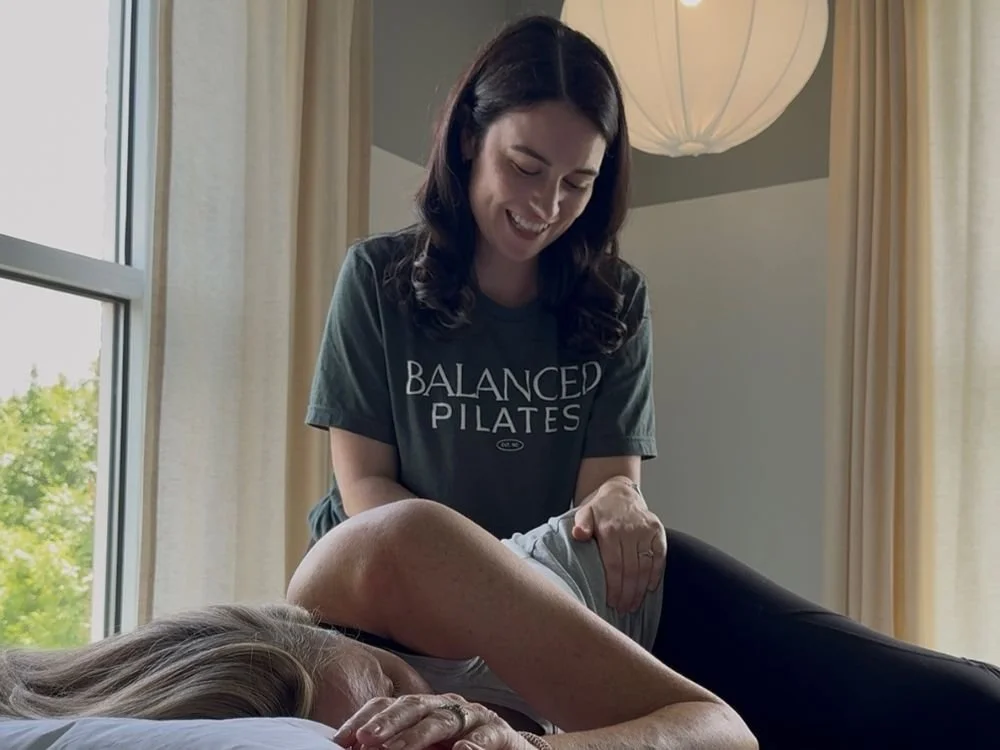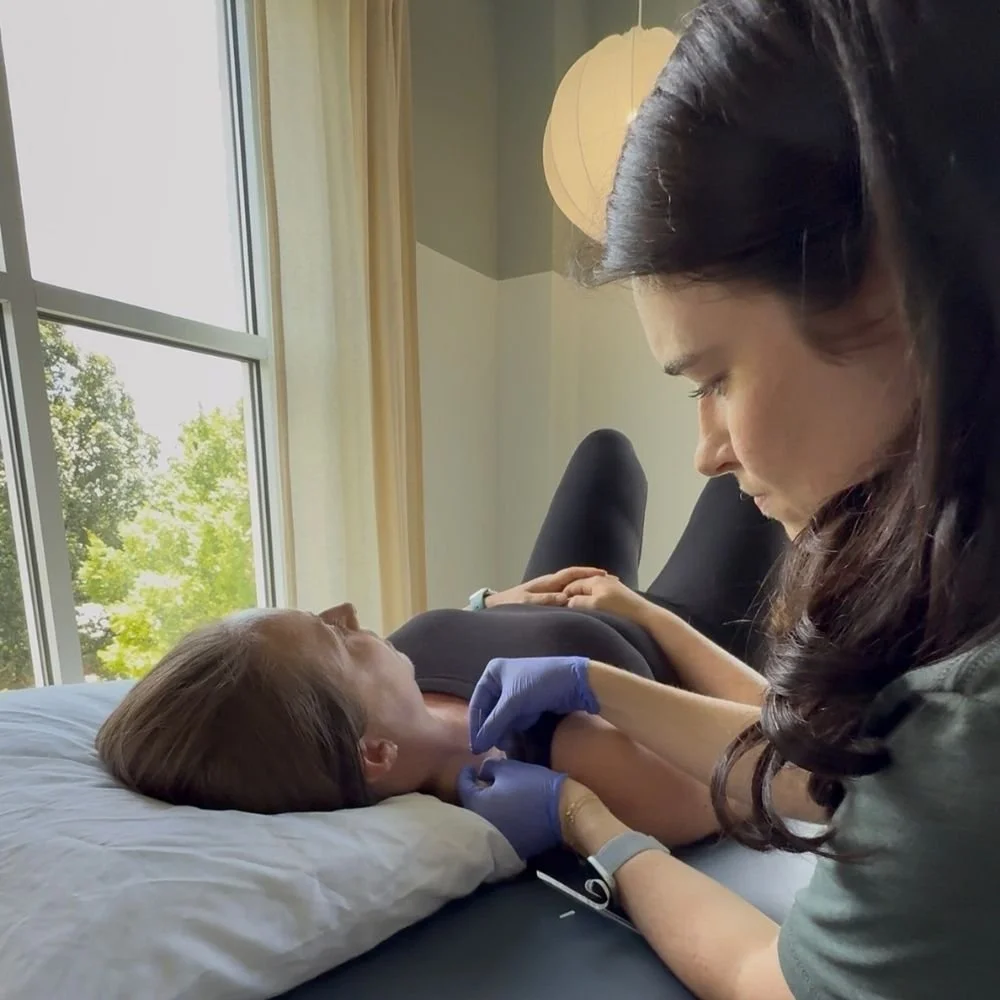
Trigger Point Dry Needling
Pain-Relieving Dry Needling Services in Charlotte, NC
Trigger point dry needling is an innovative, evidence-based treatment technique that uses thin, solid filament needles to target muscle trigger points and relieve pain at its source. This therapeutic approach effectively addresses muscular tension, chronic pain, and movement dysfunction by stimulating the body's natural healing response and releasing tight muscle fibers. Unlike traditional approaches that may only provide temporary relief, dry needling works to break the pain cycle by directly addressing trigger points—those tender "muscle knots" that can cause referred pain, weakness, and limited mobility throughout the body.
At Balanced Physical Therapy & Pilates in Charlotte, North Carolina, we integrate trigger point dry needling as part of our comprehensive orthopedic treatment programs. Our skilled physical therapists combine this powerful technique with movement therapy and exercise to maximize your results and help you achieve lasting pain relief and improved function.
Relieve Pain at the Source with Trigger Point Dry Needling
Trigger points are hyperirritable spots within muscle tissue that can develop due to injury, overuse, stress, or poor posture. These areas often feel like tight bands or "knots" and can cause:
Local pain and tenderness at the trigger point site
Referred pain patterns that radiate to other areas of the body
Muscle weakness and decreased range of motion
Functional limitations in daily activities and sports
Sleep disturbances due to persistent discomfort
Compensatory movement patterns that can lead to additional problems
Common areas where trigger points develop include the neck and shoulders, upper and lower back, hips, and legs. These points can persist for months or years if left untreated, contributing to chronic pain conditions and movement dysfunction.
Understanding Trigger Points and Muscle Dysfunction
What is Trigger Point Dry Needling?
Trigger point dry needling involves the precise insertion of a thin, solid filament needle into the belly of a muscle to target specific trigger points. Our physical therapists may gently move the needle in different directions or leave it stationary to stimulate a therapeutic response. The term "dry" needling refers to the fact that no medication is injected—the needle itself provides the therapeutic benefit.
This technique works by:
Disrupting dysfunctional muscle fibers and trigger points
Increasing blood flow to the treated area
Stimulating the release of natural pain-relieving chemicals
Promoting tissue healing and regeneration
Resetting muscle fiber length and tension

Our Comprehensive Dry Needling Approach
1. Thorough Evaluation: Your dry needling treatment begins with a detailed assessment to ensure this technique is appropriate for your condition. Our physical therapist will:
Review your complete medical history and current symptoms
Perform a hands-on evaluation of the affected areas
Identify trigger points and areas of muscle dysfunction
Assess how these points may be contributing to your pain and movement limitations
Determine the most effective treatment strategy for your specific needs
2. Patient Education: We believe informed patients achieve better outcomes. Before beginning treatment, we ensure you understand:
Why specific muscles are being targeted and how they relate to your symptoms
What to expect during the dry needling procedure
Normal sensations you may experience during and after treatment
Post-treatment recommendations and activity modifications
How dry needling fits into your overall treatment plan
3. Integrated Exercise Therapy: Research consistently shows that combining dry needling with movement produces superior results compared to needling alone. Following your dry needling treatment, we immediately incorporate:
Targeted stretching of the treated muscle groups
Activation exercises to promote proper muscle function
Movement patterns that reinforce the benefits of treatment
Customized home programs to maintain your progress between sessions
This integrated approach ensures you receive maximum benefit from each treatment session and helps prevent trigger points from returning.
Dry Needling FAQs
-
Trigger point dry needling can take anywhere from just a few minutes to usually around half an hour, depending on the number of muscle groups being treated and whether we perform exercises between treatment of different muscle groups. The total appointment time, including evaluation, education, and post-needling exercises, typically ranges from 45-60 minutes. Your therapist will provide a more specific timeframe based on your individual treatment plan.
-
Following your initial evaluation, your physical therapist will be better able to determine whether dry needling is appropriate for you and can provide a rough estimate of how many sessions you may benefit from. Research shows that up to six sessions of dry needling may be needed to determine whether it will be an effective tool for your condition. However, many patients begin to notice improvements within the first 2-3 sessions, and we can typically assess its effectiveness before reaching the maximum number of treatments.
-
No, there are no additional fees for dry needling at Balanced Physical Therapy & Pilates. Trigger point dry needling is included in the cost of your regular physical therapy sessions, so you don't need to worry about any extra charges. This allows you to focus entirely on your recovery without financial concerns about accessing this valuable treatment technique.
-
While both techniques use thin needles, dry needling and acupuncture are fundamentally different approaches. Dry needling is based on Western medicine and anatomy, specifically targeting trigger points and muscular dysfunction identified through physical examination. Acupuncture, rooted in Traditional Chinese Medicine, focuses on energy meridians and points throughout the body. Dry needling is performed by physical therapists trained in musculoskeletal anatomy and is always combined with movement and exercise therapy for optimal results.
-
Most patients experience only mild discomfort during needle insertion, often described as a brief pinch or pressure sensation. You may feel a muscle twitch or cramping sensation when the trigger point is contacted, which is actually a positive therapeutic response. After treatment, some patients experience mild soreness similar to post-exercise muscle fatigue, which typically resolves within 24-48 hours. Your therapist will provide specific post-treatment guidelines and may recommend gentle movement, hydration, and avoiding strenuous activities for the remainder of the day.


